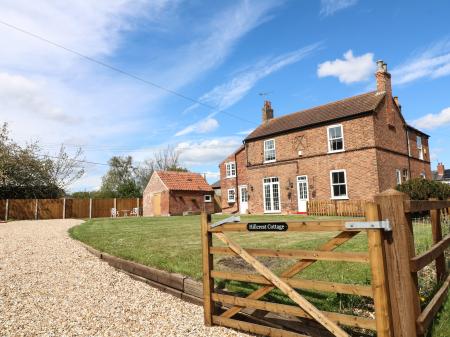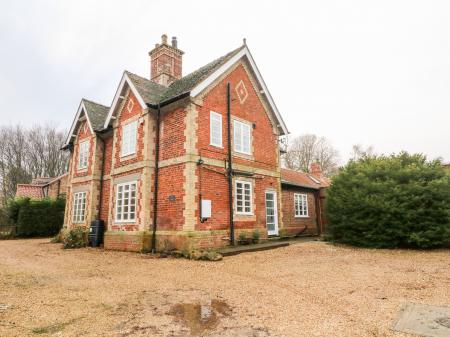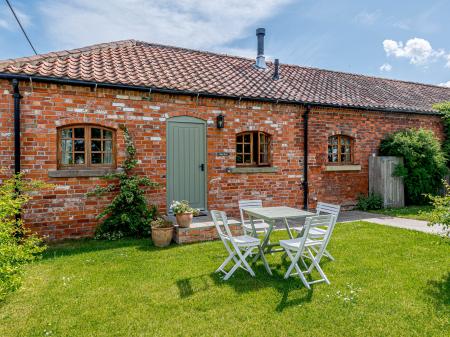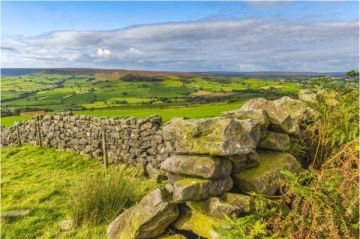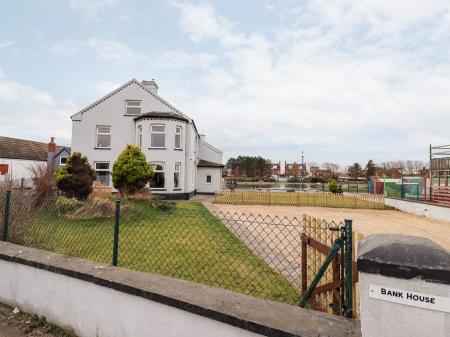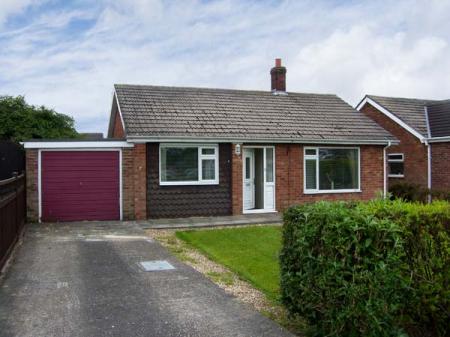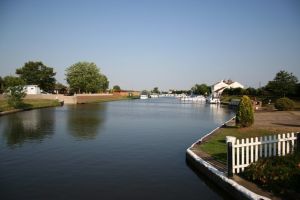
In the 7th century, King Edwin watched St Paulinus baptise large numbers of people in the River Trent at Torksey.
The Anglo-Saxon Chronicle for the year 872 AD mentions a Viking winter camp at Torksey. Archaeological finds suggest that the Vikings reused an earlier Saxon burh, or defended settlement, possibly a form of 'beach market' beside the river.
By the time of the Domesday Book, Torksey was the third-largest settlement in Lincolnshire, after Lincoln and Stamford. Two medieval monasteries were established here, and the residents were served by 3 churches. Of the 3 only St Peter's remains, with early English arcading and a peculiar carving in the south nave wall that may be a sheela-na-gig. By the altar is a 15th-century grave slab, and the font is late Norman, with a beautifully carved rim.
Torksey Castle
Beside the river is the remains of the 16th-century manor house, Torksey Castle, which fell into disuse after its destruction in the Civil War. The manor house (it was never a castle, despite the name) was built by the Jermyn family, possibly as a stopover on travels to York from their Suffolk home.
The location beside the river probably had a dual purpose; it was convenient for transporting goods but perhaps as important, the Lords of Torksey had the right to exact tolls from river traffic, so the castle would have been a profitable enterprise to maintain.
The Jerymyns supported the king in the Civil War, and the manor was seized by Parliamentary troops. Royalist soldiers from Newark attacked and burned the house, which was never rebuilt. Stones were scavenged for local building projects, and some of the structure was lost when the Trent River Board raised the water levels in 1961.
There is no public access to the castle, but it can be seen from a footpath on the river's west bank, and from the A156 roadway.
Another, more modern ruin at Torksey is the viaduct built in 1847 to carry the Manchester, Sheffield and Lincolnshire Railway across the Trent. The Torksey Viaduct is the first box girder bridge in the world and was designed by engineer John Fowler. The Boards of Trade and the Institute of Civil Engineers both rejected the design, and the bridge was eventually strengthened with a central truss system in 1897.
There are attractive walks along the river and canal. Three miles away is Stow Minster, a superb Saxon church.
 We've 'tagged' this attraction information to help you find related historic attractions and learn more about major time periods mentioned.
We've 'tagged' this attraction information to help you find related historic attractions and learn more about major time periods mentioned.